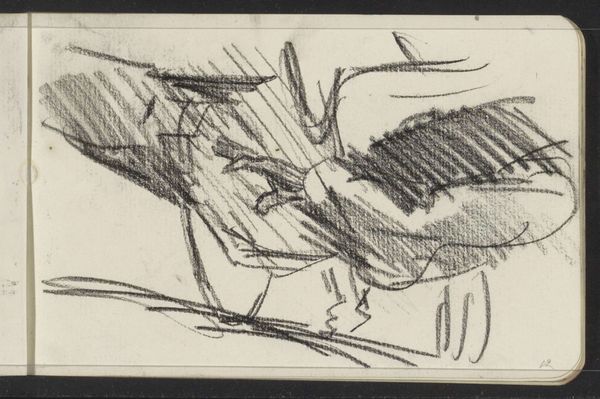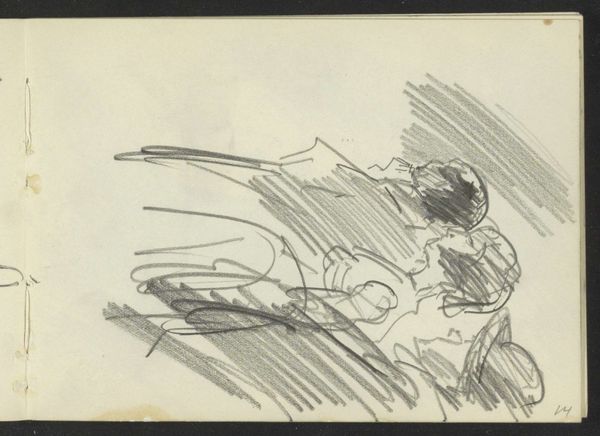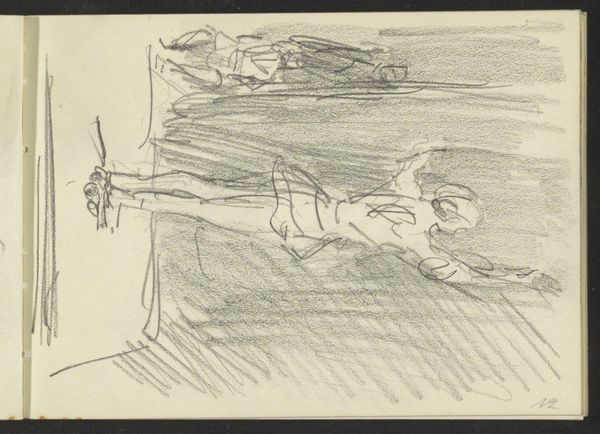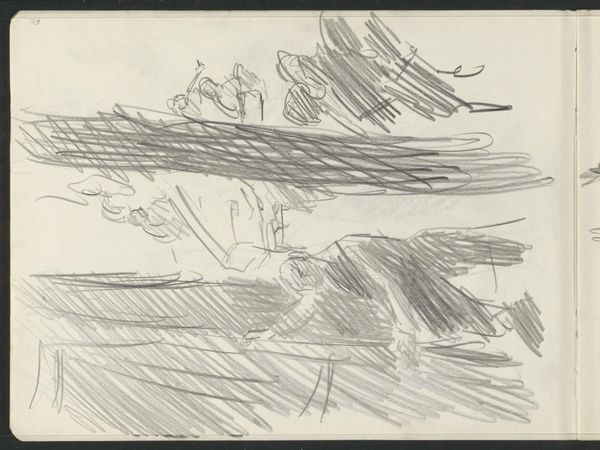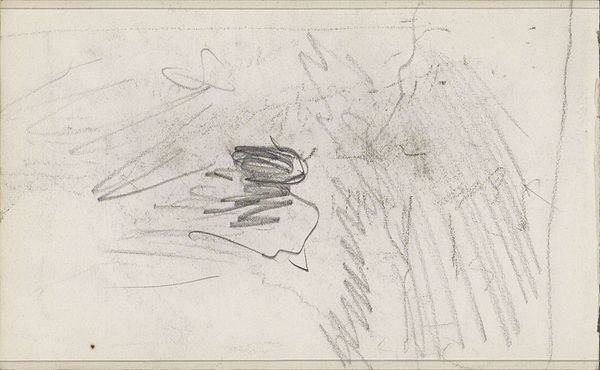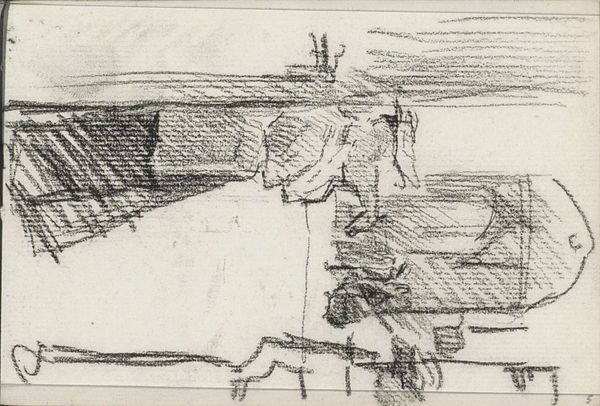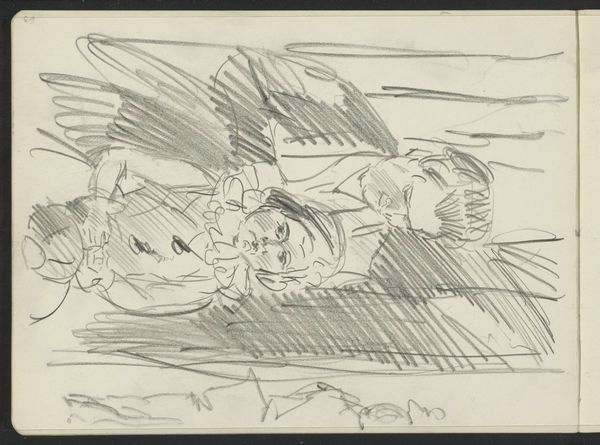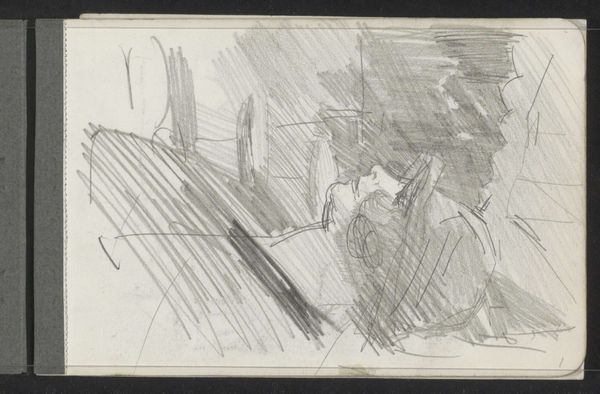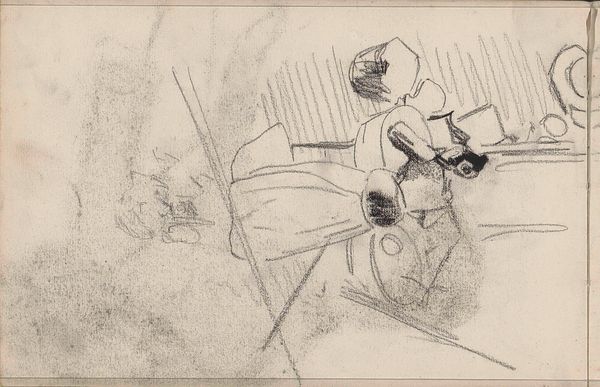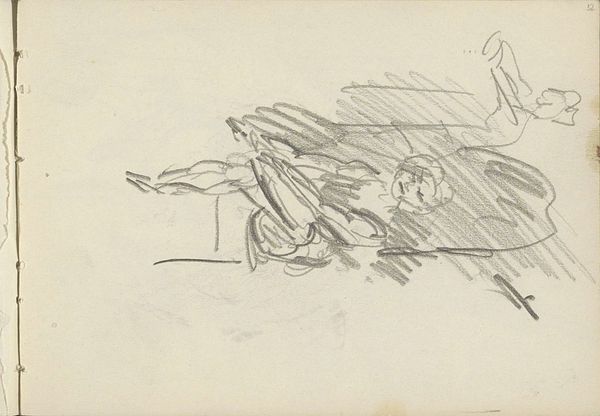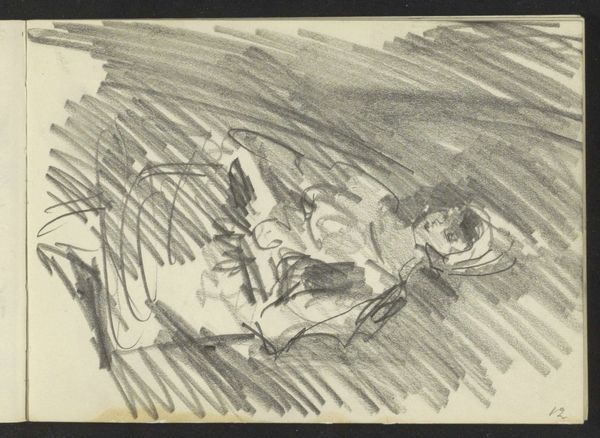
Landarbeider, zittend in een weiland met een stuk landbouwgereedschap in de hand 1848 - 1888
0:00
0:00
drawing, pencil, graphite
#
drawing
#
amateur sketch
#
dutch-golden-age
#
impressionism
#
pen sketch
#
incomplete sketchy
#
landscape
#
personal sketchbook
#
idea generation sketch
#
sketchwork
#
ink drawing experimentation
#
pen-ink sketch
#
pencil
#
graphite
#
sketchbook drawing
#
genre-painting
#
realism
#
initial sketch
Copyright: Rijks Museum: Open Domain
Anton Mauve’s sketch shows a seated laborer with a piece of farming equipment, evoking an ancient archetype: the human relationship with the land. The motif of the worker with his tools is steeped in history, calling to mind images of labor from antiquity to the modern age. Think of depictions of agricultural life from ancient Egypt, where the cycles of planting and harvesting were intimately linked to the divine order. This figure, at rest yet still grasping his tool, symbolizes humanity's ongoing dialogue with nature. Consider how the image of labor has evolved. From the idealized agrarian scenes of classical art to the gritty realism of the 19th century, the depiction of workers reflects changing societal values and the growing recognition of the dignity—and the hardship—of manual labor. Here, the worker's posture conveys a sense of fatigue, yet also quiet dignity. It's a powerful force, engaging viewers on a deep, subconscious level. The figure of the worker is not merely a representation of labor, but a symbol that has resurfaced, evolved, and taken on new meanings in different historical contexts.
Comments
No comments
Be the first to comment and join the conversation on the ultimate creative platform.

